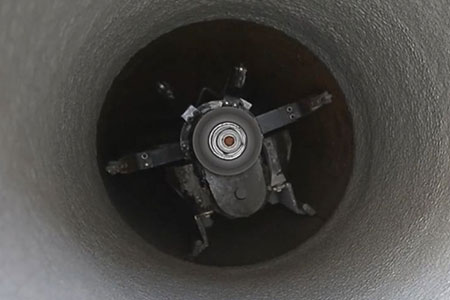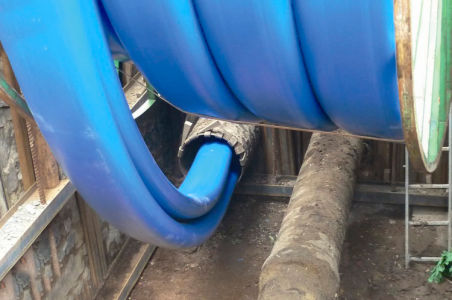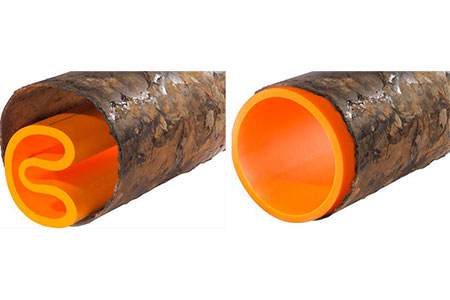Slip Lining Close-Fit
Slip Lining | Close-Fit
This name commonly indicates a series of techniques that implement the insertion, within the pipe to be restored, of a new pipe for which it is temporarily modified, in order to facilitate its insertion, the cross section. This is a technology designed for the rehabilitation of pressure tubes with straight or nearly straight lines and whose circular section is almost unchanged over the entire section concerned.
The system is based on the property of thermoplastic materials to “remember” their original form and recover it entirely when they are no longer subjected to the internal or external force that modified their shape. When the new pipe has reached its design position inside the old pipe, an internal pressure is applied or the external load is removed so that the pipe can return to its original shape.
The versatility of thermoplastic sheaths has led to the development of a wide range of perfectly adherent (close-fit) slip-lining systems. For the purpose of introducing the sheath into the tube, this change in shape can be achieved by reducing its diameter (swaged liners) or by varying its shape (folded liners).
Diameter reduction / expansion systems are essentially of two types: those in which the reduction / expansion is obtained with static die (static die) or set of hemispherical rollers (rolldown), and those in which the reduction of the diameter of the thermoplastic sheath it is obtained by compression. Diameter reduction systems are usually used in the case of structural (shimmed) sheaths in order to withstand the high pressures to which the pipe is subjected.
The compression systems instead consist of passing the sheath through a series of rollers until their size is reduced. In this case, the result obviously involves an increase in the thickness of the sheath which is maintained until it can return to its original shape under the pressure of the flow inside it.
The reduction in diameter thus obtained is relatively stable and therefore the recovery of the original shape / size by the sheath in the absence of a thrust from the inside could even take several days or even weeks. Compression techniques, such as reduction techniques, are usually applied to very thick thermoplastic sheaths.
In the technique of folded liners, instead, the piping, also in this case in high density polyethylene, is folded to form a C or a U.
The outer diameter of the sheath is designed to be slightly less than the internal diameter of the hole of the original sewerage to be coated. In this way, the pipe is laid well when it recovers its shape and does not form longitudinal folds. The folded system can be hot or cold and can be used both during production and on site.
The shape of the hot-folded sheaths is maintained without resorting to further forces; on the contrary, cold-folded sheaths must be held in place by bands or temporary straps. Hot bent pipes are wound on coils for transport to the construction site.
The pipes bent in the factory are normally used for pipes with a reduced diameter up to a maximum of 500 mm. The pipe is threaded and pulled into the pipe where it is returned to the desired section in perfect adhesion to the existing pipe walls using a combination of heat pressure (usually 125 ° C) and air.


